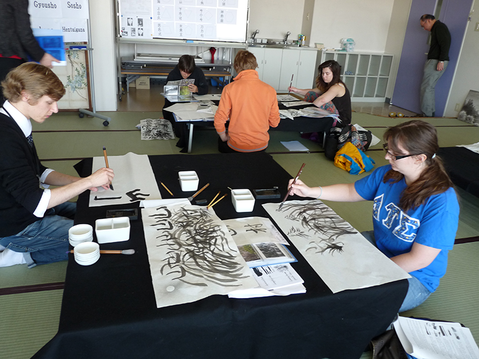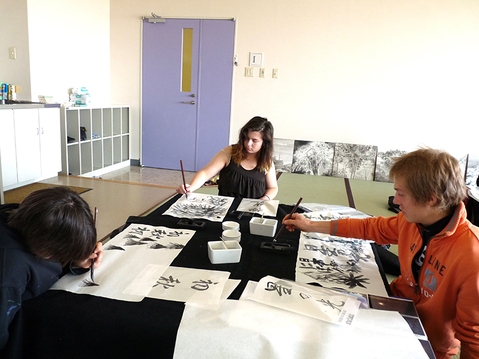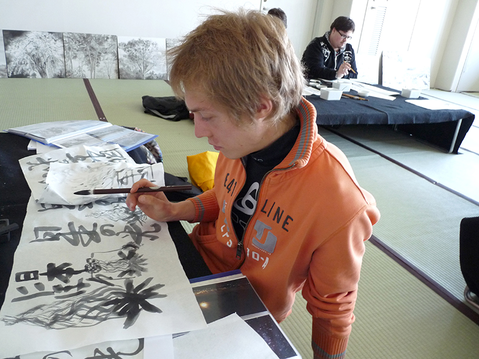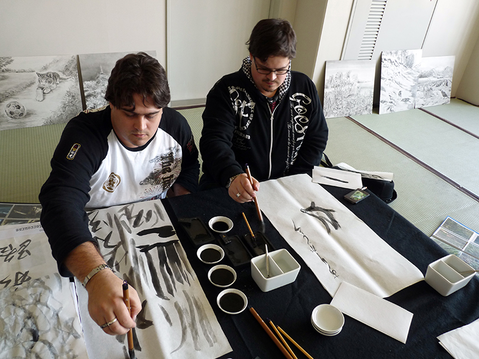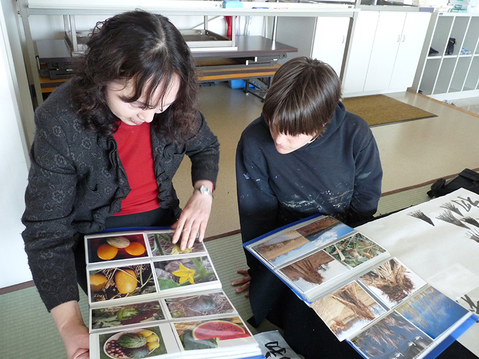Calligraphy and Sumi-e Workshop
Apr 25, 2013 (Thu.)
Workshops on calligraphy and ink painting were held at the Center for International Education at Kansai Gaidai University on the Saturdays of the 13th and 20th of April. The tea practitioner and calligraphy artist Oki Reiko-sensei introduced the use of the writing brush to interested international students of Kansai Gaidai University’s Asian Studies Program.
Oki Reiko-sensei, who also hosted the Tea Ceremony workshop on the first Saturday of Spring Break, wished to convey the utility of the way of the brush. The writing brush was the main tool for educated people of olden times – it served as their means of learning as well as communication with other people. The writing brush allowed them to convey their feelings and wishes to people across great distances, through letters, and even across time, through books and diaries. “In some respects, the brush – and the ability to use it – was as important in olden days, as the computer is today,” Oki-sensei explained. She continued to elaborate her hope that the way of scrutiny for sketching objects, taught in connection with ink painting, would benefit the students in their way of analyzing problems in their future profession.
Even though the internet is the unchallenged means of communication today, the arts of painting and calligraphy still have unique abilities to convey feelings and thoughts to other people. This is especially true of the art of writing Chinese characters (kanji) beautifully, since these characters each represent an idea, rather than just a specific word, and thus convey a myriad of meanings depending on the context.
Learning how to handle the brush to write elegant kanji is an art that takes years, traditionally more than a decade. It is therefore limited what can be learned through a two-hour workshop. However, Oki-sensei has quite a unique way of approaching the subject. “Since the same brush can be used for the art of calligraphy as well as the art of ink painting,” she explained, “using techniques from ink painting will greatly improve your ability to write kanji, and vice versa.” Combining the techniques of the two arts makes the more difficult techniques easier to acquire and thus makes it easier to advance.
Though the workshop finished at 3 pm, many of the students stayed for another half hour, caught up in their painting or kanji phrase. “Tea ceremony, calligraphy and ink painting have much the same feeling,” a student noted before leaving. Oki-sensei nodded eagerly in agreement, seemingly moved by the student’s realization of this fact.
Mikkel Kofod Norgard,
Student Assistant, Center for International Education
Home Institution: University of Aarhus

